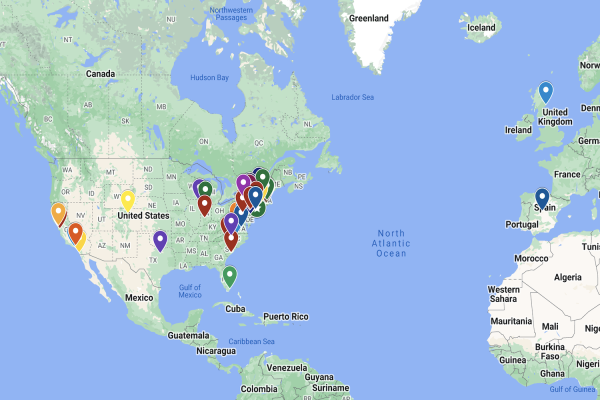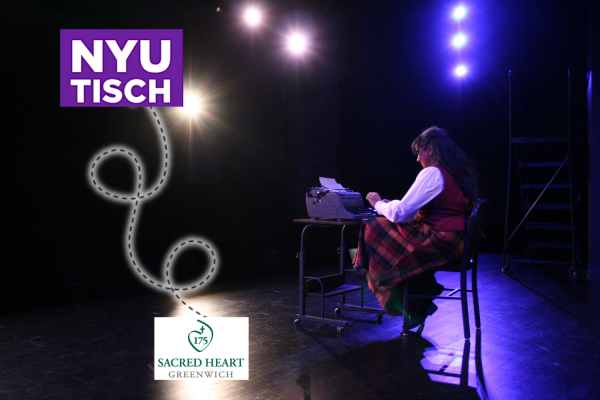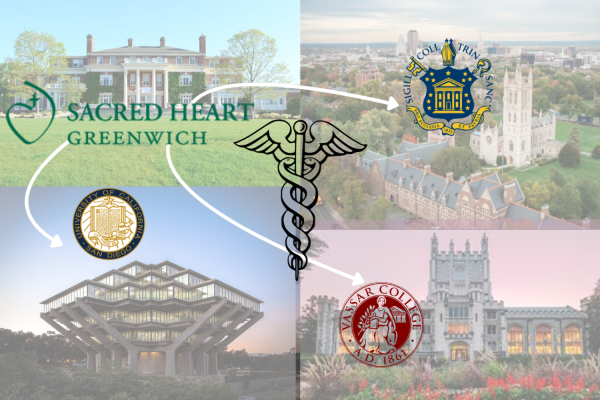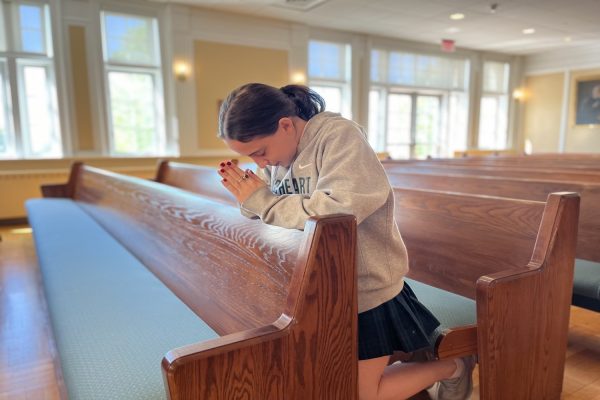Climate change accelerates fall leaf drop
Increased amounts of atmospheric carbon dioxide accelerate autumn leaf drop.
The vibrant reds and golds of fall foliage mark the annual arrival of autumn. As global levels of atmospheric carbon dioxide rise, however, the colors of the season will arrive earlier and more briefly. The acceleration of fall foliage demonstrates the effects of climate change on the world today. Senior Annie O’Connor, Co-Head of the Upper School Sacred Heart for Sustainability club, initiates conversations about the climate crisis and works to implement sustainable solutions in the school community.
A knowledge of photosynthesis is necessary to understand the effects of climate change on autumn foliage. Through the process of photosynthesis, plants convert water, sunlight, and carbon dioxide into glucose, an energy source. Trees photosynthesize with a green-colored compound in leaves called chlorophyll. When autumn arrives, shorter days and cooler nights signal to the trees to stop photosynthesis for the winter, and chlorophyll production wanes, according to go.gale.com.
In the Northeast United States, the peak season for autumn leaf coloration begins in mid-October and lasts for six weeks. However, recent studies suggest that climate change, including increased global temperatures, higher levels of atmospheric carbon dioxide, and more frequent drought, will result in abbreviated leaf coloration and accelerated leaf drop, according to science.org.

The timing of leaf drop depends on a tree’s carbon dioxide intake as well as seasonal changes in light and temperature, according to science.org. Trees use carbon dioxide for photosynthesis. They also store carbon dioxide in their roots and trunks. Through this absorption of carbon dioxide, trees combat human-induced climate change. However, trees only engage in a set amount of photosynthesis during the growing season, and there is a limited amount of carbon dioxide that trees can hold in their roots and trunks. As warmer temperatures cause leaves to emerge earlier in the spring, trees will absorb this carbon dioxide sooner and therefore expedite their leaf drop, according to science.org.
Different weather patterns as a result of climate change can also cause an earlier autumn leaf drop. In regions prone to drought or excessive rainfall, trees become stressed and drop their leaves sooner in the season, according to science.org.
Scientists predict that most deciduous tree species will have shorter periods of leaf coloration. Additionally, researchers expect leaf drop to occur three to six days earlier by the end of the twenty-first century, according to science.org. This acceleration in the timing of autumn leaf drop is a visible effect of climate change on the world.
The Sacred Heart for Sustainability club raises awareness about the climate crisis and works to implement sustainable initiatives in the school community. Annie commented on the urgency of climate change.
“Many people are unaware of the graveness of climate change and the effect it is already having on our environment,” Annie said. “People dismiss the threat of climate change as not being imminent to our earth. I think it is very important to discuss and bring these topics to the surface.”
Annie expressed concern regarding the effects of increased carbon dioxide on autumn leaf drop. She mentioned the close linkage between seasonal shifts and ecosystems, explaining how any change to the cycle of seasons can disrupt the natural balance of ecosystems. Annie also discussed the club’s initiatives to reduce the school’s carbon dioxide emissions.

The club is currently working to implement “Meatless Mondays.” Through the elimination of meat products from the school lunch on Mondays, the club endeavors to decrease the amount of carbon dioxide that the modern meat industry emits daily.
“The less meat that we consume and the less meat that we buy, the greater the impact of our actions will be towards reducing the effect of carbon dioxide on our planet,” Annie said.
Annie recommended that individuals reduce their daily carbon dioxide output by recycling and minimizing automobile use. She also spoke about the importance of climate awareness and action.
“It is not too early to start brainstorming ideas to create a sustainable future,” Annie said. “I really hope that our school community and individuals can educate themselves on climate change and look towards the future.”
Featured Image by Avery Kim ’24

Avery is honored to serve as one of the Editors-in-Chief of the King Street Chronicle. After two years on the newspaper’s staff, she has learned countless...











